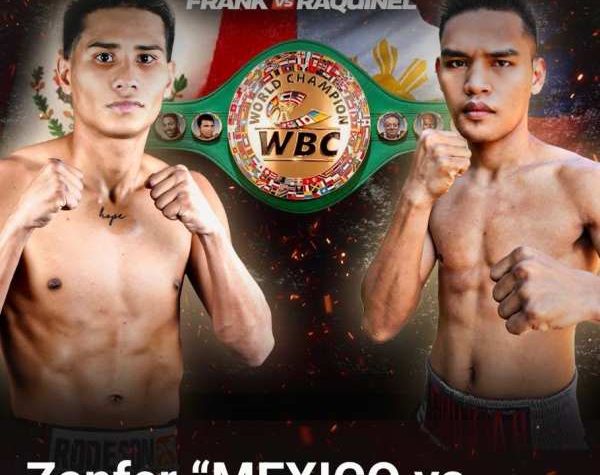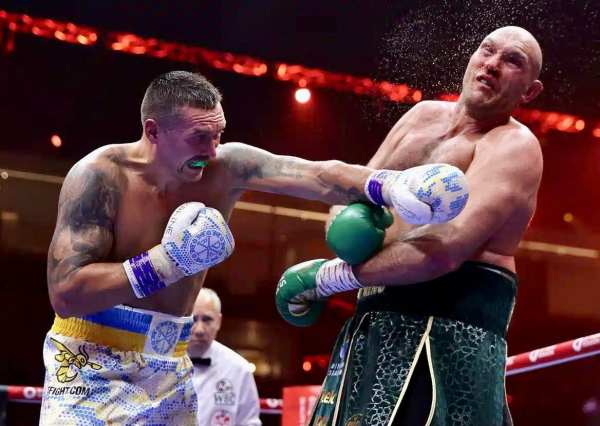

boxingnews24.com
By Joseph Hirsch: It’s getting to be a rarer and rare sight these days: two undefeated guys in their prime and in the top of the rankings, squaring off against each other in the boxing ring. After the disappointment of getting our collective hopes up for the Golovkin-Alvarez showdown that may or may not materialize in 2018, hardcore fans at least got to see a high-speed chess match between Sergey Kovalev and Andre Ward in 2016.
A similar matchup between two unbeatens at the top of the heap is slated for March 4th at Barclays between Keith “One Time” Thurman and Danny “Swift” Garcia. Like most people trying to figure the odds and the angles on this one, I have Thurman picked to win. Unlike a lot of people, though, I’m having trouble forgetting how many times Danny Garcia has been the B-side of boxing cards, and the underdog who over-performed.
The best way to understand why Danny Garcia is so good is to think of him and his skillset in terms of the talent-stack. For those who don’t know, a talent stack is the sum of a person’s total pool of abilities, rather than just one value or feature. Sometimes if a man is a balanced boxer who is good at everything but not great at anything and he faces a boxer with only one great attribute, the more balanced fighter takes out the flashier fighter with the one great skill.
For real world examples of this, think of Amir Khan and Rau’Shee Warren. Both men have incredible hand-speed, but Khan’s chin has always been a massive liability and Warren, though effective in spurts, had no answer for the high-octane unrelenting pressure fighting of the Ricky Hatton-trained Zhanat Zhakiyanov.
To paraphrase Al Bernstein, Danny Garcia isn’t great at anything, but he is good at everything, and while he has fought some great fighters who were past-prime (Morales and Judah, for example) Garcia has the one skill necessary for a slower man to beat the faster fighter: he is incredibly tricky. His punches come at odd speeds and angles, looping masterful changeup midrange hooks that can cause fits for faster fighters.
There is a certain type of fighter whose punches look slow but keep connecting on faster men (think Jesus Soto-Karass versus Andre Berto, or Carl Froch versus a slew of opponents). Keith Thurman is certainly faster than Garcia, but he isn’t faster than some of the customers Garcia had his way against in the ring. Yes, Danny got tagged and gave up rounds here and there while figuring his opponents out, but he eventually did what he had to do to pull off the win, sometimes an upset victory.
Can he pull off another upset? A lot of that depends on Thurman’s game plan, and how effective Garcia is at taking him out of that. Range will be key. Garcia is best fighting at midrange, where his hooks do the most damage. He likes to load up and usually doesn’t rely on decoys, feints, and “pitty-pats” (as Roy Jones calls the weak probes of alternating power used by masters like Lomachenko and James Toney). If Keith Thurman keeps turning as he punches, and throws off the backfoot, he can force Danny to continually reset and keep his hands at home.
If Thurman can’t keep Garcia at the end of his punches, if Danny can effectively work himself into that sweet spot between inside and outside, he has his best shot. Cutting off the ring will be key, since chasing Thurman will allow “One-Time” to sting Garcia with jabs that won’t put Danny on the canvas, but will win rounds on activity alone if Garcia can’t catch him and swings wide.
The good news for Garcia is that, notwithstanding Keith Thurman’s nickname of “One-Time” and Thurman’s superior KO percentage (a 20% margin of difference between the two men, give or take), he is probably not going to knock Danny out. Garcia has a granite chin, one of the best beards of any man in his weight class.
And even though Garcia has the lower KO percentage and this fight is a wholly different beast than Kovalev-Ward, Thurman-Garcia shares one feature in common with that high-speed affair: it is very much matador versus bull, with Garcia as bull and Thurman as matador. In other words, Garcia can be careless, get picked off from time to time, and lose rounds here and there. Keith Thurman’s margin of error is much smaller. A man who lunges with his shots like Garcia is open for counters and check-hooks all night, but if he connects with a bomb that has enough torque on it and it lands on the button, twisting the neck just right, there is not a boxer alive at welterweight who can’t be put to sleep. It’s just basic science, like gravity.
That said, Garcia has to catch Thurman flat-footed at some point. If Keith loses balance and Garcia tags him, he can score a flash knockdown and excite the crowd and pick up an extra point with the judges, but it is going to take much more to get Thurman out of there. Keith has a bit of Roy Jones in him, and likes to occasionally fight with his hands low and stick his head out and use his chin to bait the other guy in and make him pay after missing. He may not hotdog it quite so much with Garcia, but if he does that leaves only one of two outcomes: his speed and reflexes are too good for Danny, who swoops in, misses, and gets starched, or Thurman’s confidence gets exposed as overconfidence and he gets punished for getting too cocky and not keeping his hands up. Fighters with great reflexes get away with unorthodox guards until they lose just a tiny bit of speed. Fighters with sound fundamentals and more traditional guards might not be as flashy, but they last longer and can use their bag of tricks to stay competitive well-past prime (compare post-prime Bernard Hopkins to post-prime Roy Jones).
Keith Thurman, like Ali and his countless imitators, is not so much a boxer as an artist who chose boxing as the outlet to express his martial skillset. He has the same ability as Bernard Hopkins did in his prime, to slow the affair down if something is not working, to use his ring generalship like an hourglass to control the pace, to adjust the speed and tempo of the fight at will.
Danny is Danny, and it is too late for him to become a different kind of fighter, with all the good and bad that entails. And that actually might not be a bad thing, because Thurman, for all his great skills, is not Superman and he is certainly not without his own weaknesses, some of which mirror Garcia’s. While Keith is better at working his opponent up and down, mixing shot output, volume, speed, and power, he also loads up and sometimes waits before throwing the perfect punch. If both men land bombs at the same time, or connect cleanly at around the same time, my money is on Garcia to be the last man standing (regardless of Thurman having more KOs).
Keith Thurman is hard to hit, but it isn’t as if he has never been tagged flush. He’s most effective when he doubles up and doesn’t snipe and potshot, waiting to land a homerun. During those times when he tried to pick shots too carefully, he’s been caught cleanly. A past-prime Guerrero nailed him flush and troubled him in spots, for instance.
Another potential problem for Thurman is that, while his stick-and-move style may resonate with boxing fans who love the scientific aspect of the sweet science, some judges may see more stick than move in his work. If Thurman puts rounds in the bank and then avoids trading with Danny too often, that can be murder with the judges. As the fighter Joey Giardello once said of Dick Tiger: “He don’t understand the difference between moving and running.” Sometimes judges don’t understand it, either, and fights that were seemingly “in the bank” for one guy in the first half of a match have tipped the other way due to them getting overly-cautious in the second half (think De La Hoya vs. Trinidad).
Thurman is ultimately lucky that Garcia is not more compact, and prefers to stay in the middle distance, for it is the stockier inside fighters who’ve flustered Thurman, since he is a master when his opponent obliges by staying on the end of his punches. There are many who thought Shawn Porter beat Thurman in a close fight (with all three judges scoring it 115-113 in favor of Thurman). The much less spectacular Leonard Bundu didn’t trouble Thurman all that much (he even got dropped to the deck in the first round), but “One-Time” couldn’t get his man out of there, and the pressure and inside fighting was part of what made it a long night.
Who wins may ultimately come down to who not only gets the other guy in trouble, but who makes the most of the opportunity that opens up once he has his man hurt. Danny Garcia has sometimes demonstrated mastery as a finisher, closing in a measured, surgical fashion against a wounded opponent. He has also gotten overeager and rushed in and smothered his own work, when taking a half step back would have been the smart move.
The main danger for Keith when he gets into the red zone is that he tends to not only keep fighting when he would best be served by a clinch, but he even steps back and continues to throw when moving forward and locking up is key to survival. Just because he hasn’t paid the ultimate price for recklessness in the past doesn’t mean he might not eventually get caught slipping.
The most likely outcome is that Keith wins rounds fighting from the outside, boxing and moving. There will be moments where it looks like the tide is turning, and Danny may even get him in trouble and look like the fight is his to take, but Thurman will adjust, get back on his bicycle, and continue to cruise to a lopsided unanimous decision.
That said, Danny has been counted out too many times for anyone who has followed his career to think Keith has this one in the bag. And anyone who thinks Keith is going to win with one punch doesn’t know much about Danny’s chin, his heart, or his craftiness. Also don’t forget the talent stack.





More News
Liu Gang, Brico Santig Join Forces
Highland’s Double Impact: August 18 at Lumpinee
Balajadia, Atencio in Action in Thailand